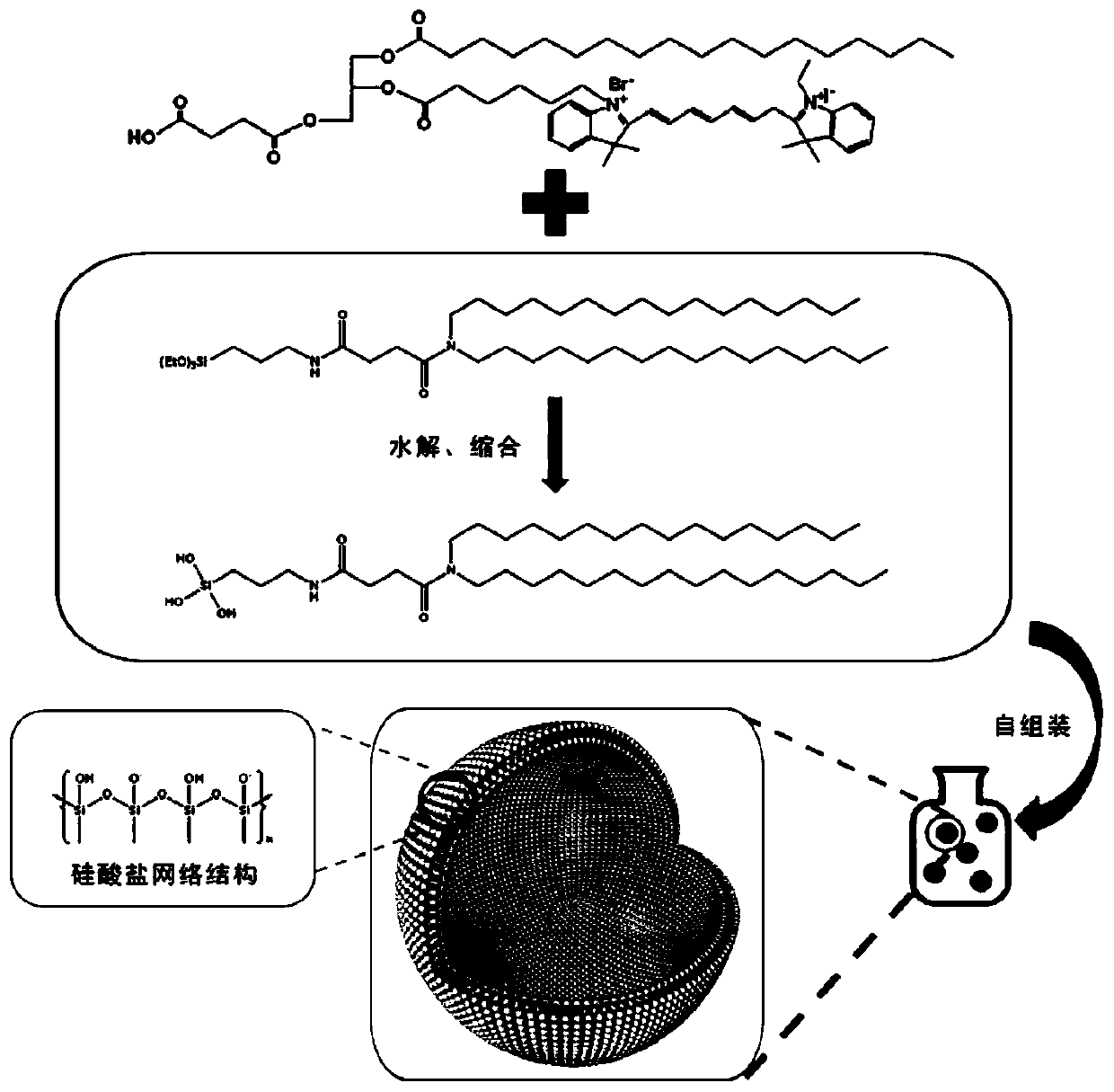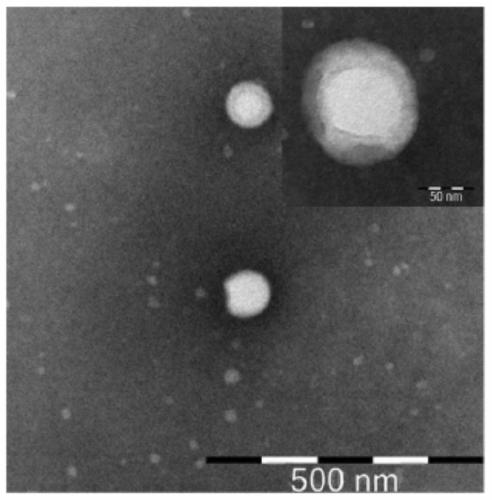A siliceous nanoparticle drug carrier and its diagnostic and therapeutic preparation and preparation method
A nanoparticle and siliceous body technology, which is applied in the field of siliceous body nano-targeted diagnosis and treatment preparations and its preparation, can solve the problem that it is difficult for organic dyes to reach the parts that need to be treated stably, the light conversion efficiency of dyes is reduced, and controlled release cannot be achieved. Effect and other issues, to achieve the effect of improving photothermal conversion efficiency and photothermal therapy and imaging effect, improving encapsulation efficiency and drug loading, and improving therapeutic effect
- Summary
- Abstract
- Description
- Claims
- Application Information
AI Technical Summary
Problems solved by technology
Method used
Image
Examples
Embodiment 1
[0060] A preparation scheme of the preparation described in the present invention is as attached figure 1 shown, including the following steps:
[0061] 1) Synthesis of methine dyes: indoline structure 2 prepared by Fischer addition of structure 1 and ketones, structure 3 and structure 4 were obtained by substitution reaction, structure 3 and methine conjugated chain containing resonance structure Small molecule-like structure 5 was dispersed in acetic anhydride under nitrogen protection and stirred at 120°C to obtain structure 6. Structure 6 and the indoline structure monomer at the other end were dispersed in triethylamine for substitution reaction to form structure 7, namely methine Cyanine fluorescent dye 7, the structure of each compound is as follows Figure 8 shown;
[0062] The specific operation is as follows:
[0063] Add 0.57g of phenylhydrazine, 1.68ml of 3-methyl-2-butanone and 3ml of glacial acetic acid into a 50ml round bottom flask, heat and stir for 3h to o...
Embodiment 2
[0077] The small animal near-infrared fluorescence imaging effect evaluation of the preparation prepared in Example 1 mainly includes the following steps:
[0078] (1) Establishment of subcutaneous tumor model in nude mice: HT-29 cells were injected into each nude mouse at 2×10 6 The amount of cells was inoculated subcutaneously on the outer thigh of BALB / c nude mice, and the nude mice were raised under SPF environment;
[0079] (2) The size of the tumor grows to about 100mm 3 100 μL of 4 mg / mL of the preparation prepared in Example 1 was injected through the tail vein, and at different times after administration, the fluorescence intensity signal of the tumor site was detected with a small animal near-infrared fluorescence imaging system.
[0080] The imaging results are attached Figure 4 As shown, after injecting the preparation, the near-infrared signal of the tumor site gradually increased, and reached the strongest near-infrared fluorescence signal at 8 hours, and diff...
Embodiment 3
[0082] (1) Investigation of photothermal heating stability: Add 3ml of siliceous nanoparticle with equal concentration, fluorescent dye and undoped composite liposome solution into quartz cuvette, and use 808±10nm wavelength and 2W / cm 2 The output power of the solution is irradiated with a near-infrared laser of a continuous wave diode, and the temperature of the solution is measured every 10 seconds with a digital thermometer and a thermocouple probe for a total of 10 minutes, then cooled to room temperature, and repeated three times. Record the temperature rise after 10 minutes of irradiation. This experiment required three parallel experiments.
[0083] (2) Investigation of structural stability: non-ionic surfactant Triton X-100 with different volume ratios was added to different nanoparticles dissolved in PBS and serum, incubated at 37°C, and then treated with Malvern Zetasizer Nano-ZS90 Determine the particle size of the nanoparticles. This experiment also required thre...
PUM
 Login to View More
Login to View More Abstract
Description
Claims
Application Information
 Login to View More
Login to View More - R&D
- Intellectual Property
- Life Sciences
- Materials
- Tech Scout
- Unparalleled Data Quality
- Higher Quality Content
- 60% Fewer Hallucinations
Browse by: Latest US Patents, China's latest patents, Technical Efficacy Thesaurus, Application Domain, Technology Topic, Popular Technical Reports.
© 2025 PatSnap. All rights reserved.Legal|Privacy policy|Modern Slavery Act Transparency Statement|Sitemap|About US| Contact US: help@patsnap.com



